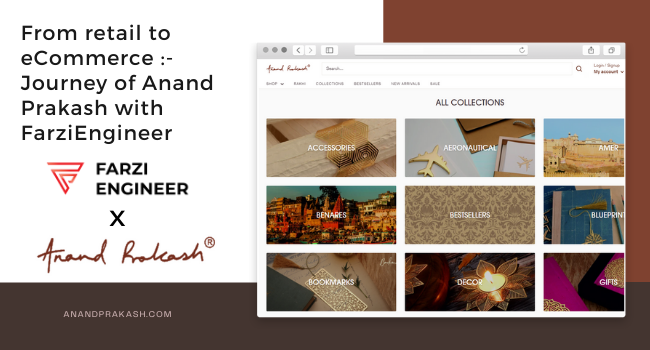Direct-to-Consumer (D2C) is a dynamic landscape, and thriving in this realm requires more than just a great product. I recently had an eye-opening conversation with Rishabh Satiya, the visionary founder of Plixlife (now proudly part of Marico), where we explored the intricacies of evaluating a business’s potential for success in the online world. Here’s what Rishabh had to say:
1. The Crucial Role of Gross Margin.
For a business to even be considered viable for D2C, it must boast a robust gross margin of 75% to 80%. Why is this so important? High margins are essential for several reasons:
- Profitability from the Start: Higher margins allow a business to be profitable right from the first order. This is crucial for sustainability.
- LTV Enhancement: Increasing the Lifetime Value (LTV) of customers becomes possible with healthy margins, helping you build a sustainable business model.
2. High AOV or Bundle Strategy
To excel in the D2C space, it’s advantageous to have a product with a high Average Order Value (AOV). However, if your product doesn’t naturally command a high AOV, consider creating bundles or packages of multiple units. Rishabh suggests aiming for an AOV range of 1200 to 3000 per order.
Why is this important? Here’s the rationale:
- Optimizing Marketing Costs: Marketing costs do not rise linearly with the price of a product. For instance, the cost of acquiring a customer for a 400 Rs product might be close to 250 Rs, but for a 1200 Rs product, it might only be around 400 Rs, not the expected 750 Rs. Higher AOV can significantly optimize your marketing expenses.
3. Niche Analysis is Key: Understanding Your Territory
In the fast-paced world of Direct-to-Consumer (D2C) businesses, finding your niche is not just a suggestion—it’s a fundamental necessity. Rishabh Satiya, the astute founder of Plixlife (now proudly part of Marico), underscores the paramount importance of meticulously analyzing your product’s niche before diving in. Here’s why it matters:
Analyzing the Landscape:
- Top Players Study: To understand your niche better, begin by studying the top players in that space. What sets them apart? What strategies have they employed to reach the pinnacle of success?
- Facebook Ads Library Dive: A deep dive into the Facebook Ads Library is akin to peering into the strategies of your competitors. By examining the types of ads they run, you can glean insights into the content creation costs and the themes that resonate with their audience.
- The Cost of Video Content: Rishabh pointed out a critical aspect—video content for ads can be notably expensive. Understanding this upfront can help you plan your marketing budget more effectively.
Case Study: Artisanal Drinks and Beverages Niche
To illustrate the significance of niche analysis, let’s delve into a real-world example. Rishabh and I conducted an analysis of the Artisanal Drinks and Beverages niche. Even though this niche appeared promising, a red flag emerged during our investigation:
The Absence of Facebook Ads from the Top Player:
- Critical Observation: Despite being a prominent player, the top brand in the Artisanal Drinks and Beverages space was not running any ads on Facebook.
- Signaling a Challenge: This observation raised a critical question—why was the top player avoiding Facebook ads? It signaled a potential challenge in the niche, such as high customer acquisition costs or limited audience engagement on the platform.
4. Competitors: A Valuable Indicator
Rishabh’s evaluation philosophy places significant emphasis on competitors as valuable indicators of market viability. Here’s why:
- Sweet Spot with 2-3 Competitors: In Rishabh’s perspective, the sweet spot for a niche is having 2-3 competitors with decent traction. This indicates that there’s a market demand, but it’s not oversaturated.
- No Competitors: Early or Late: Conversely, if you find yourself in a niche with no competitors, it could imply two scenarios. You might be too early, pioneering a niche that’s yet to gain traction, or you might be too late, entering a niche that has already been explored thoroughly.
In essence, analyzing your niche and competitors isn’t just a preliminary step—it’s an ongoing process that informs your strategy, helping you make informed decisions and positioning your D2C business for success. Understanding your territory is crucial as you navigate the intricate landscape of online commerce.
Remember, knowledge is power, and in the world of D2C, it can be the difference between thriving and merely surviving.
5. Leveraging Amazon for Market Analysis: Unveiling the Competition.
In the realm of D2C, one of the most vital aspects of setting up a successful venture is conducting thorough market analysis. Rishabh Satiya, the visionary founder of Plixlife (now proudly part of Marico), offers a unique perspective by suggesting the use of Amazon as a potent tool for understanding your market and competition dynamics.
Amazon: More Than an E-Commerce Giant
Amazon is not just an e-commerce giant; it’s a treasure trove of market insights waiting to be unearthed. Here’s how leveraging Amazon for market analysis can provide you with a competitive advantage:
**1. Product Research:
- Competitor Benchmarking: By exploring similar products on Amazon, you can gauge the level of competition in your niche. Take a close look at the top-selling items and study their product descriptions, pricing strategies, and customer reviews.
- Customer Reviews: Amazon is a goldmine of customer feedback. Dive into product reviews to understand what customers love and dislike about similar products. Use this information to refine your own offerings and address pain points that competitors might be overlooking.
**2. Pricing Strategies:
- Competitive Pricing: Analyze how competitors are pricing their products on Amazon. This can provide insights into the pricing strategies that resonate with customers in your niche.
- Discounts and Promotions: Take note of any discounts, promotions, or bundled offers your competitors are using to attract customers. This can help you craft compelling pricing strategies of your own.
**3. SEO and Keywords:
- Keyword Analysis: Amazon’s search algorithm relies heavily on keywords. Investigate the keywords your competitors are targeting in their product listings. This can inform your own keyword strategy for better visibility on Amazon and other search engines.
**4. Customer Behavior:
- Customer Preferences: Amazon’s vast customer base provides a glimpse into consumer preferences. By examining which products are frequently purchased together or what customers also viewed, you can identify opportunities for cross-selling or bundling.
**5. Fulfillment Methods:
- Shipping and Fulfillment: Investigate how your competitors handle shipping and fulfillment. Are they using Amazon’s Fulfillment by Amazon (FBA) service? Understanding their fulfillment methods can help you optimize your own logistics strategy.
**6. Market Trends:
- Best Sellers: Amazon regularly updates its list of best-selling products. Monitoring these trends can give you insights into what’s currently in demand in your market.
**7. Customer Engagement:
- Q&A and Customer Interaction: Delve into customer questions and interactions on Amazon product listings. This can reveal common queries, concerns, and areas where customers seek more information.
By harnessing the power of Amazon as a market analysis tool, you can gain a comprehensive understanding of your niche, competition, and customer behavior. This knowledge can inform your D2C strategy, helping you make data-driven decisions that position your brand for success.
6. Building a Moat: Tech or Content (insights of rishabh satiya)
In the world of D2C, where competition can be fierce and market dynamics ever-evolving, it’s essential to establish a strong and defensible position for your brand. Rishabh Satiya, a seasoned entrepreneur, emphasizes the significance of constructing what he calls a “Moat” around your business, with two distinct avenues: technology and content.
Technology as a Moat:
Investing in cutting-edge technology can set your brand apart from the competition. Here’s how:
- Enhanced User Experience: Leveraging advanced technology can lead to a seamless and enjoyable user experience. This can include features like personalized recommendations, streamlined checkout processes, and responsive mobile applications.
- Efficiency and Scalability: Implementing efficient tech solutions can optimize your operations, reduce costs, and enable scalable growth. Automation, data analytics, and supply chain management systems are just a few examples of how technology can make your business more efficient.
- Innovation and Product Development: Staying ahead in the D2C game often involves innovation. Technology enables you to experiment with new product lines, incorporate customer feedback swiftly, and adapt to changing market trends.
Content as a Moat:
Compelling and valuable content can be a powerful differentiator for your D2C brand:
- Storytelling: Crafting a unique brand story and narrative can create an emotional connection with your audience. Authentic storytelling can make your brand more relatable and memorable.
- Educational Content: Providing educational content, such as blog posts, videos, or webinars, can position your brand as an authority in your niche. This not only builds trust but also attracts and retains customers seeking valuable information.
- Engagement and Community Building: Content, especially on social media platforms, can foster a sense of community among your customers. Encouraging user-generated content and engaging with your audience can turn customers into loyal brand advocates.
- Search Engine Visibility: High-quality content can improve your website’s search engine ranking, making it easier for potential customers to discover your brand.
The Moat Advantage:
Building a Moat around your D2C business is akin to constructing a protective fortress. It’s your competitive advantage, safeguarding your brand from market volatility and competition. A strong Moat can make it challenging for competitors to replicate your success, giving you a distinct edge.
As you embark on your D2C journey, consider which path—technology or content—aligns best with your brand’s identity and objectives. Whether you choose to invest in cutting-edge tech solutions or create compelling content that resonates with your audience, remember that building a Moat is a long-term strategy that can secure your brand’s position in the ever-evolving landscape of D2C commerce.
Conclusion: Charting D2C Success
In the intricate realm of Direct-to-Consumer (D2C) business, success is no happenstance. It’s a result of strategic choices and informed decisions. Our journey through enlightening conversations with Rishabh Satiya has unveiled pivotal strategies for thriving in the D2C landscape.
- Gross Margin Vitality: Maintaining a robust gross margin of 75% to 80% is the bedrock of profitability and long-term sustainability in the D2C space.
- AOV and Efficiency: Elevating Average Order Value (AOV) or crafting compelling bundles optimizes marketing costs, enabling efficient growth.
- Building a Moat: The strategic choice between technology and content can create a protective “Moat” around your brand, offering a non-linear path to success.
- Amazon’s Insights: Utilizing Amazon as a market analysis tool provides invaluable insights into competitors, pricing strategies, and consumer behavior.
- Niche Evaluation: Rigorous niche analysis and vigilant competitor assessment are key to gauging market viability.
With these insights at your disposal, you possess a compass to navigate the dynamic D2C landscape. Armed with knowledge, adaptability, and strategy, your D2C venture is poised for success and poised to thrive among industry leaders. 🚀🌟





